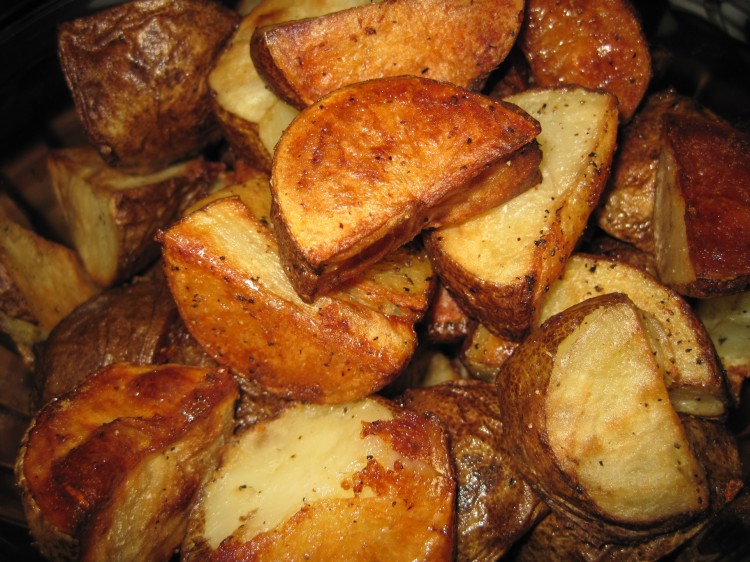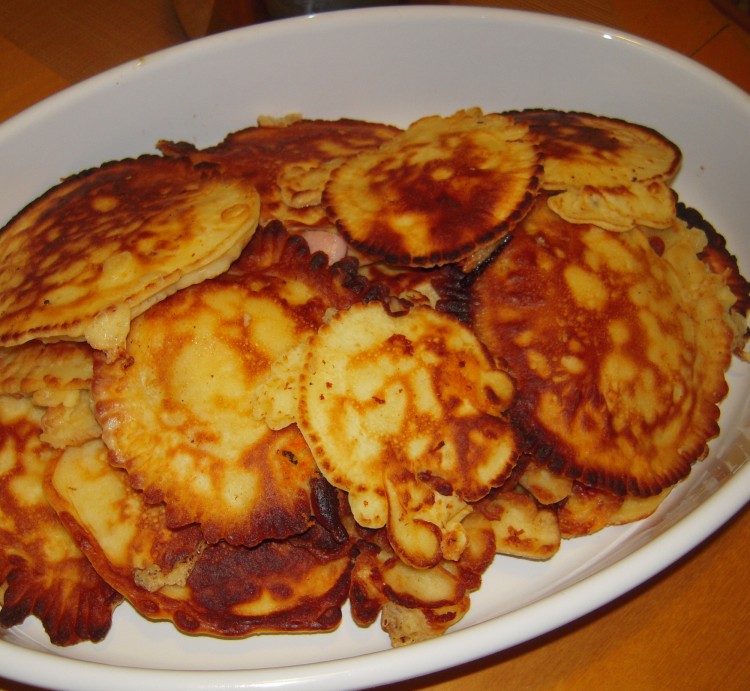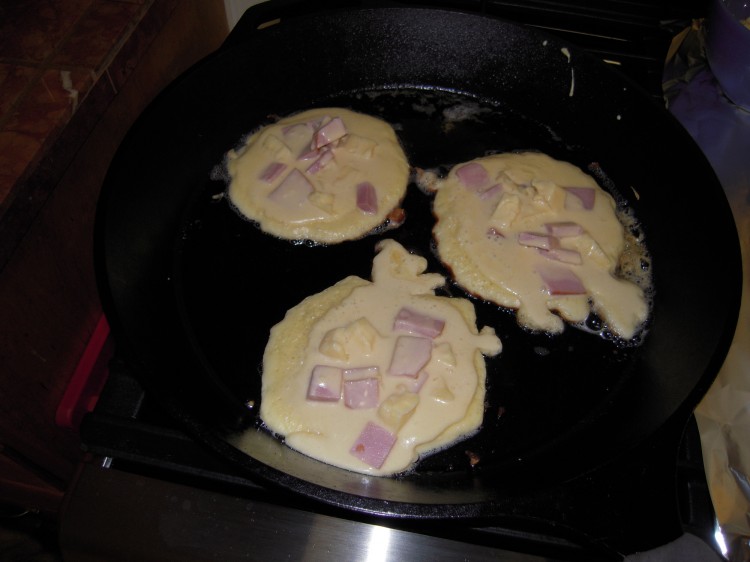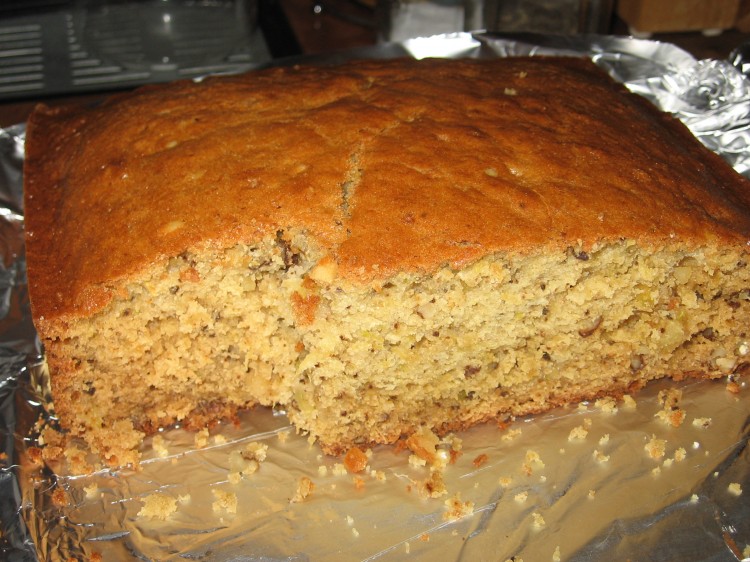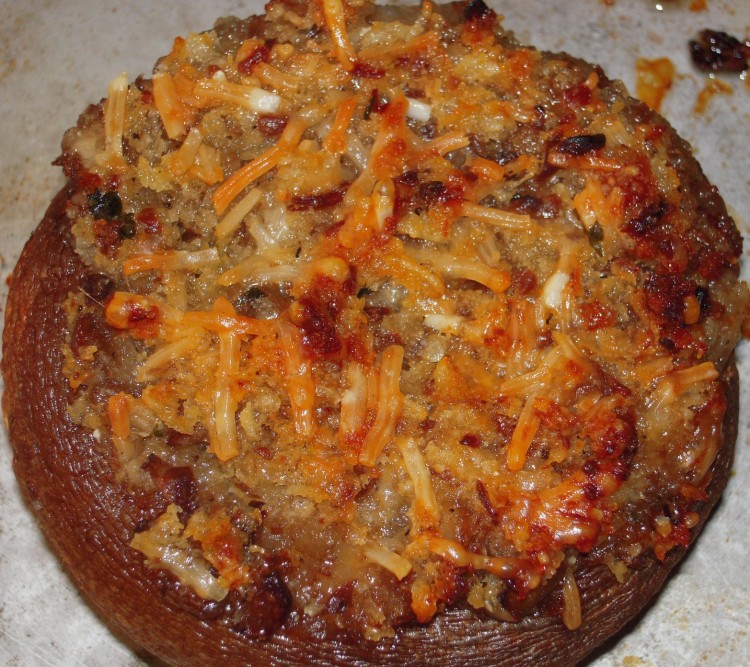
The way I figure it, stuffed mushrooms need a MacGuffin.
If you remember your Hitchcock, a MacGuffin is a device in a fictional work that drives the plot and hooks viewers.
Without a distinctive element, a stuffed ‘shroom is just so much breadcrumbs and cheese, and many of them taste the same because they all have basically the same kind of stuffing.
What I set out to do was create a version that was familiar and comforting, but had a little more impact.

Stuffing for mushrooms on stove
First, I wanted to really bring out the umami* in the mushrooms. Next, I had to be able to use the stems for frugality’s sake. Finally, there would have to be an ingredient that would separate my version from the pack.
Mincing and browning mushroom stems and adding anchovy paste and a nice dose of vermouth resulted in a savory, substantial stuffing with a little kick. If you think of what vermouth does to risotto, you’re on the right track.
These come out of the oven nicely brown, too.
I suggest you use the large mushrooms called for in the recipe because they’re easy to deal with and work well on a dinner plate in place of a protein. They look big, meaty and inviting. Berkeley Bowl almost always has them.

Stuffed mushrooms ready to go into oven
Savory Stuffed Mushrooms
Makes enough for 5 as a main dish served with sides, 10 as an appetizer10 extra-large (huge, really) white mushrooms
2 tablespoons butter
3 tablespoons olive oil
2 teaspoons chopped shallots
2 teaspoons chopped garlic
1/2 teaspoon black pepper
1/2 teaspoon ground marjoram
2 teaspoons dried parsley
1 teaspoon anchovy paste (or 1 anchovy fillet that has been mashed to a pulp with a fork)
Scant 1/4 cup dry vermouth
1 cup panko (Japanese breadcrumbs, which are coarse and unseasoned)
3/4 cup shredded Parmesan cheese
Olive oil for brushing
1). Prepare mushrooms by wiping well or washing and drying. Make sure they are very dry! Pull out stems carefully and set aside. Lightly grease a sheet pan and arrange caps bottom side up.
2). Mince the stems finely. Do this with a food processor unless you have the patience to arrive at a very fine mince by hand. I use a Kuhn-Rikon “Twist & Chop.” Set aside all but 1/4 cup.
3). Saute the 1/4 cup minced stems in the olive oil in a small but heavy saucepan until golden brown.
4). Take the pan off the heat and allow it to cool for a couple of minutes.
5). Place butter, shallots, garlic, pepper, marjoram and parsley in saucepan with browned stems and saute over low heat until butter is melted.
6). Cover and cook for about a minute. You want to sweat this mixture and not brown it.
7). Mix in anchovy paste and cook for a few seconds.
8). Mix in remaining stems, cover and cook over low heat until mushrooms are cooked through – about 2 minutes.
9). Stir in vermouth and cook for about a minute, uncovered.
10). Remove from heat and mix in panko.
11). Transfer mixture to a bowl and allow to cool for about 20 minutes.
12). Fold cheese into stuffing until well incorporated.
13). Stuff mushroom caps, pressing filling in well. Do this with all of them and then distribute the excess evenly to overstuff slightly.
14). Brush olive oil on stuffed mushrooms, being sure to get oil on the mushrooms, not just the stuffing.
15). Bake at 375 deg F. until they are brown on the outside and hot throughout. Use convection, if you have it, but keep an eye on them so they don’t burn. Will be something like 20 – 25 minutes.
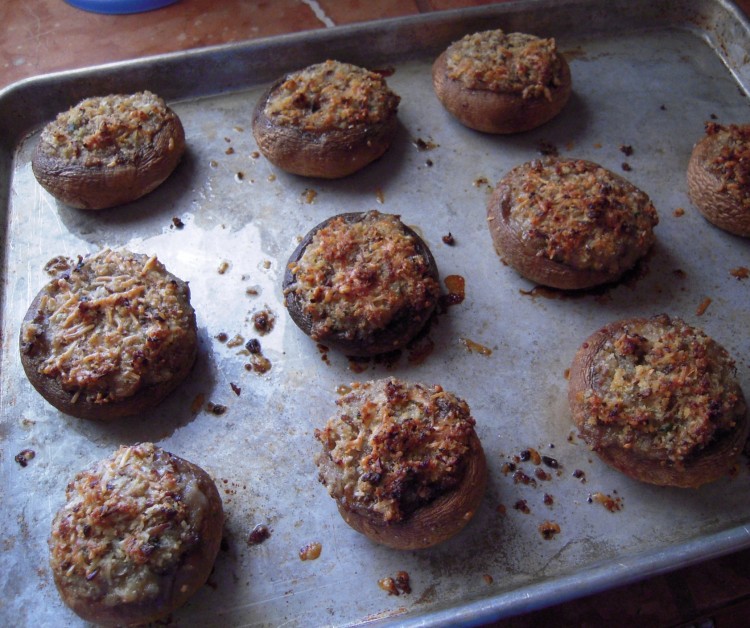
*Umami is a fifth taste (savory), occurs naturally in certain foods, and has to do, roughly, with glutamates. This is complicated, so you should do a little research for the full story

